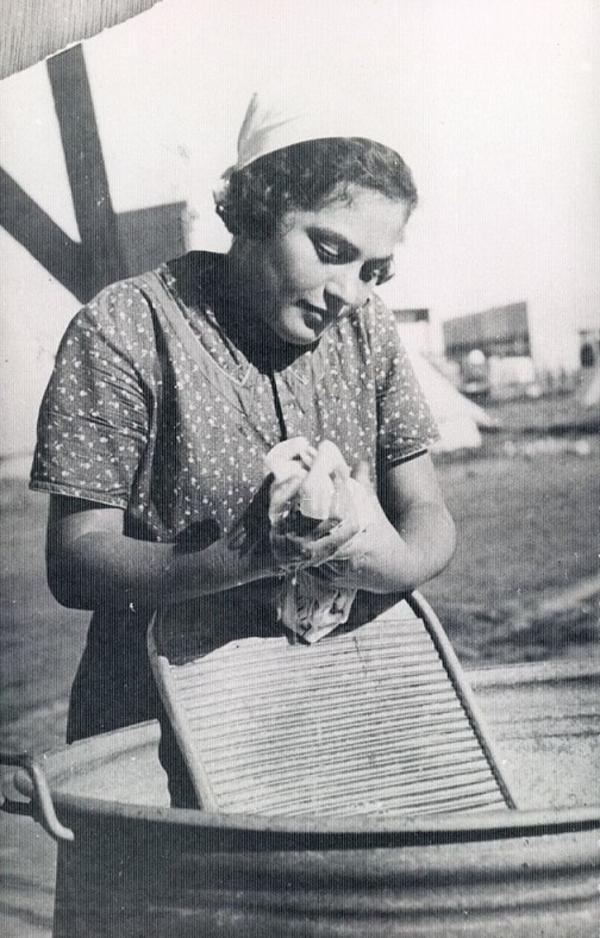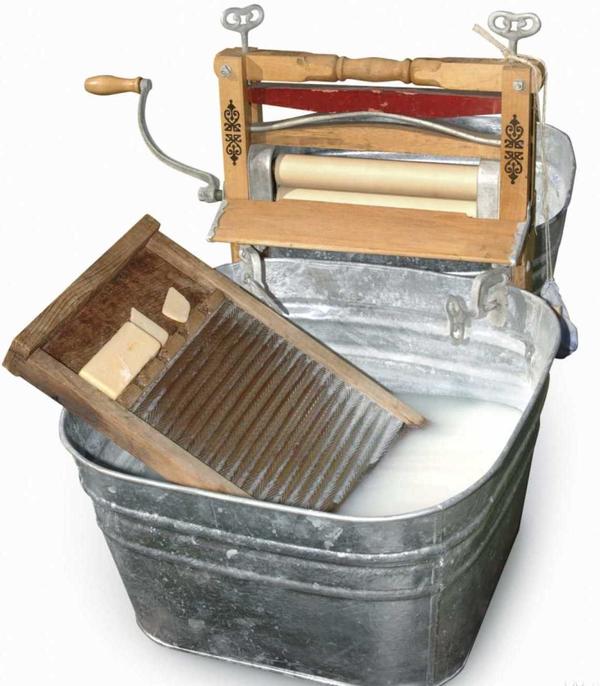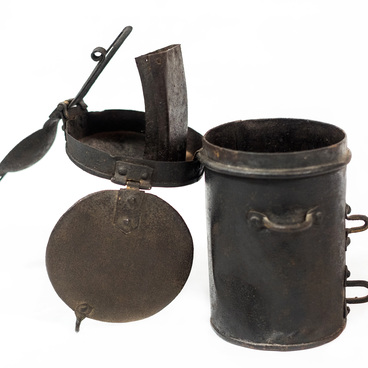The wringer was made in the late 19th and early 20th centuries in Pennsylvania, USA. At that time, washing clothes was a very laborious process that required a lot of time and effort. The first detergent was salt, which was later replaced by lye. As for mechanical devices, scrapers, stone and wood planks were previously used, which were later replaced by washboards made of corrugated iron planks. The first washboard was patented back in 1797.
Wringer
Время создания
Late 19th–early 20th century
Размер
Length: 77 cm, frame: 51 cm × 18 cm × 46 cm
Техника
Wood, metal, varnish, paint, industrial production
Коллекция
6
Открыть в приложении#1
Wringer
#6
#16
The washing process included heating the water, loading the lye, the clothes themselves, rinsing, wringing, piling, hanging. The whole process was laborious, starting with the production of lye. To do this, a thick cloth was placed in a special basin with a plugged hole, ash was poured on top, followed by boiling water. When the stopper was removed, the alkaline solution flowed down. This took 10 to 12 hours.
#7
Washing process on a washboard
#17
The era of lye finally ended only in the late 19th century long after the soap was invented because the soap’s widespread use was hindered by its high prices.
#18
At that time, washing was made only by hand. Dirty clothes were placed into a container with water, beaten with wooden rollers, and rubbed by hand. For the first time, an attempt was made to automate the washing process in English laundries in the late 17th century: wooden cylinders were placed in a corrugated wooden tub with water and linen, and then they were set in motion using hand levers.
#8
The first washing machines appeared only in the late 19th century. The drum washing machine was patented by the American James King in 1851, but it was powered by hand.
#10
The invention of the engine revolutionized the technological development. But the first tests were unsuccessful: the fabric was wound around the blades, torn, the motors burned out. Finally, American engineer John Mirren proposed to rotate not the laundry, but the water, as it happens in modern washing machines.
#19
The wringing technology developed separately from the washing machines. Hand wringers were invented in 1861 and remained unchanged for almost a century and a half. The washed item was clamped between them, the owner twisted the handle, and the rollers squeezed out the water.
#20
Main washing accessories of the late 19th – mid-20th centuries (washboard, trough, wringer).
#13
The principle of wringing laundry between rollers
#21
State Autonomous Cultural Institution of the Sverdlovsk Region "Nevyansk State Historical and Architectural Museum"
читать дальшескрыть
00:00
00:00
1x
Wringer
Время создания
Late 19th–early 20th century
Размер
Length: 77 cm, frame: 51 cm × 18 cm × 46 cm
Техника
Wood, metal, varnish, paint, industrial production
Коллекция
6
Открыть в приложении
Поделиться




